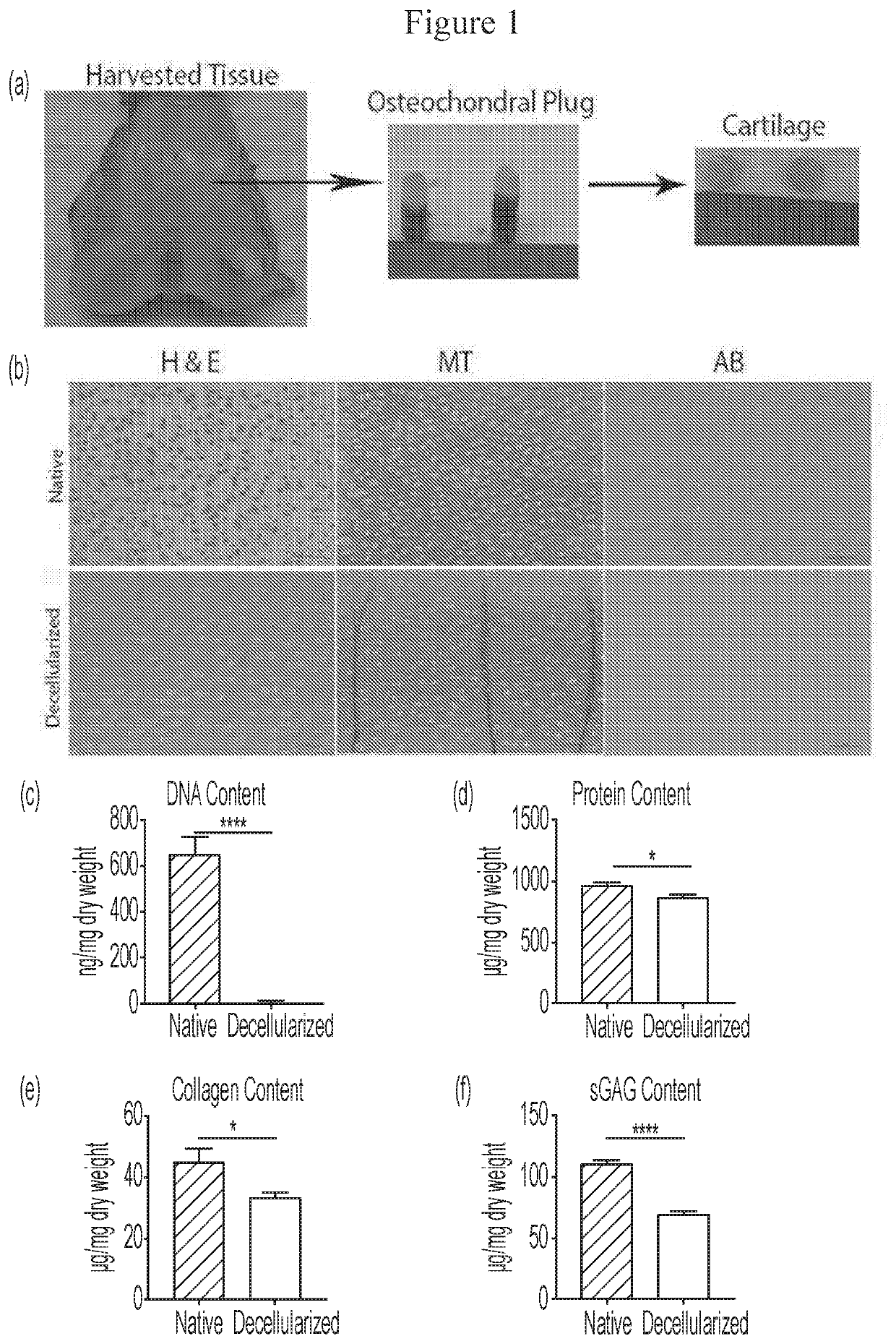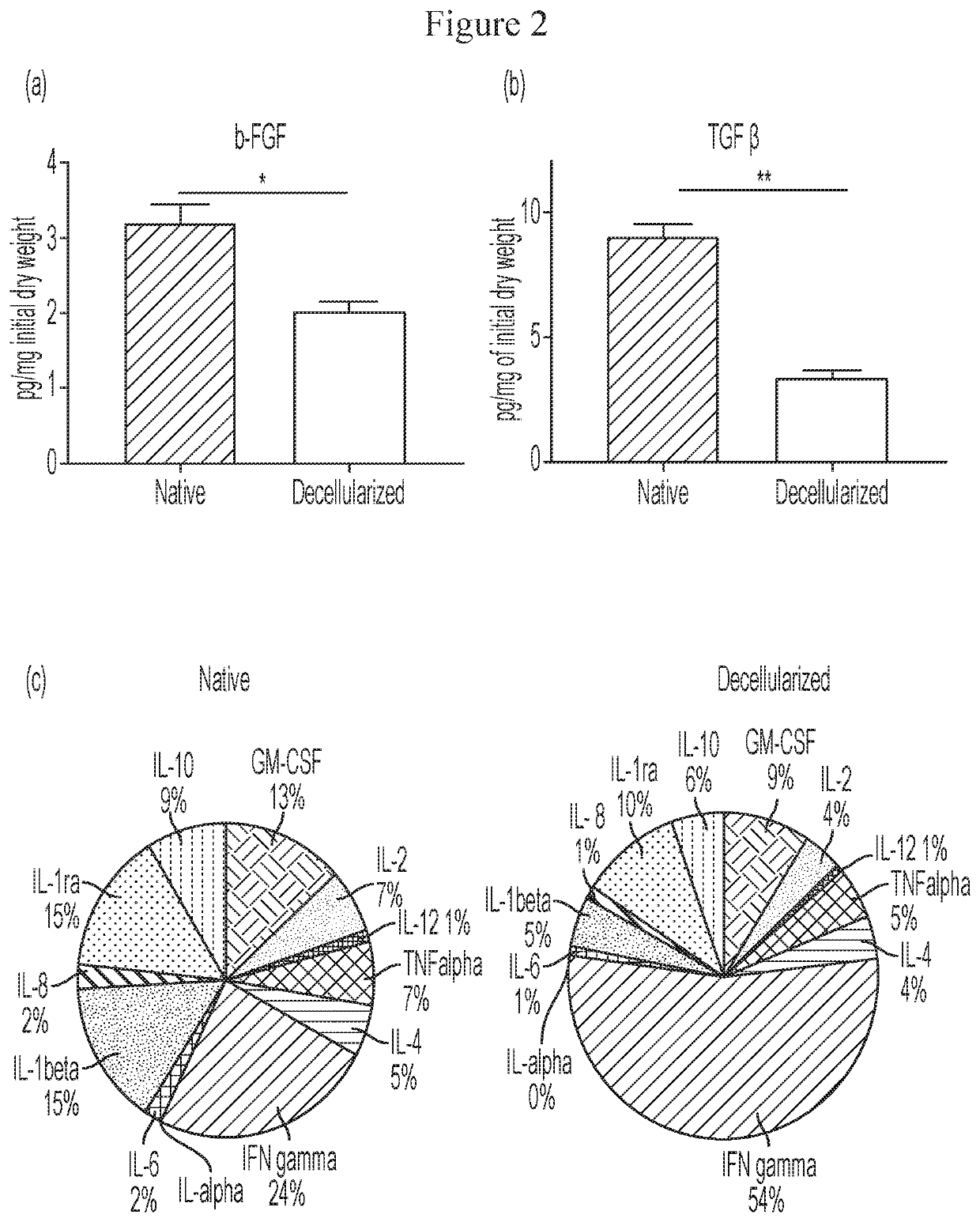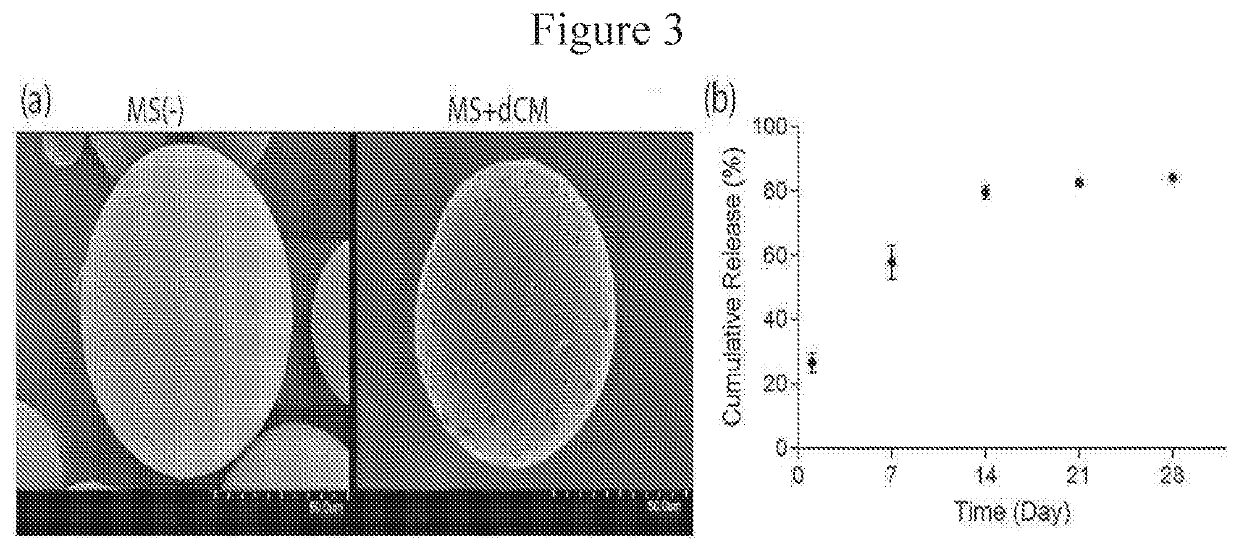Microspheres Containing Decellularized Donor Tissue and Their Use in Fabricating Polymeric Structures
a donor tissue and microsphere technology, applied in the field of microspheres containing decellularized donor tissue, can solve the problems of inability to re-generate functional cartilage akin to native tissue, high case dependence, and progressive degradation, and achieve the effect of enhancing migration, proliferation, and chondrogenesis of hmscs
- Summary
- Abstract
- Description
- Claims
- Application Information
AI Technical Summary
Benefits of technology
Problems solved by technology
Method used
Image
Examples
example 1
Harvest and Decellularization
[0110]The hind limbs of pigs were provided by the Center for Surgical Innovation, University of Cincinnati. The limbs were cleaned to remove excess blood and disinfected using aseptic techniques. The osteochondral plugs of 8 mm diameter were harvested from the femoral condyle using an Osteochondral Autograft Transfer (OAT) system.
[0111]The cartilage was then excised from the bone and were placed in sterile 15 mL conical tubes (Falcon) and stored at −80° C. until further use. The cartilage tissue was decellularized similar to the process previously described. See, Whitlock P W, et al., A naturally derived, cytocompatible, and architecturally optimized scaffold for tendon and ligament regeneration, Biomaterials 28: 4321-29 (2007).
[0112]Cartilage tissues were exposed to a series of solutions with continuous stirring in a rotating shaker (New Brunswick Scientific) at 200 rpm, 37° C. First, the tissues were immersed in 100 mL of nuclease free distilled water ...
example 2
c Analysis of Native and Decellularized Tissues
[0116]Fresh-frozen native and decellularized chondral tissues were placed in 10% phosphate-buffered formalin (Sigma) at room temperature for 24 h and were then processed for histology.
[0117]The tissues were dehydrated in a graded series of ethanol, soaked in xylene, embedded in paraffin and sliced with a microtome to obtain 5.0 μm thick, longitudinal sections. These sections were then mounted on slides and stained using hematoxylin and eosin (H&E), Masson's trichrome (MT) and alcian blue. The stained sections were then assessed under a light microscope (Nikon 90i).
example 3
al Evaluation of Native and Decellularized Tissues
[0118]The fresh-frozen native and decellularized cartilage tissues (n=10) were lyophilized (Labconco, Freeze Dry System, Kansas City, Mo.) for 72 h to achieve equivalent weight for DNA content evaluation. Total DNA was isolated from the cartilage tissues (Approximately 25 mg each) using a commercially available kit (DNeasy, Qiagen, Valencia, Calif.).
[0119]The total DNA content was measured by absorption at 260 nm using a spectrophotometer (Thermo Spectronic, Biomate 3, Rochester, N.Y.) and normalized to initial dry weight of the samples.
[0120]The lyophilized native and decellularized tissues were digested using pepsin (Sigma-Aldrich, St. Louis, Mo.)-HCl. In brief, 20 mg of the lyophilized samples was digested with 1 mg of pepsin in 0.01 N HCl (Sigma-Aldrich) for 48 h at room temperature under constant stirring. The partially digested samples were diluted with 10×PBS and 0.1 N NaOH.
[0121]Total protein content in the tissues was estima...
PUM
| Property | Measurement | Unit |
|---|---|---|
| Weight ratio | aaaaa | aaaaa |
| Structure | aaaaa | aaaaa |
Abstract
Description
Claims
Application Information
 Login to View More
Login to View More - R&D
- Intellectual Property
- Life Sciences
- Materials
- Tech Scout
- Unparalleled Data Quality
- Higher Quality Content
- 60% Fewer Hallucinations
Browse by: Latest US Patents, China's latest patents, Technical Efficacy Thesaurus, Application Domain, Technology Topic, Popular Technical Reports.
© 2025 PatSnap. All rights reserved.Legal|Privacy policy|Modern Slavery Act Transparency Statement|Sitemap|About US| Contact US: help@patsnap.com



